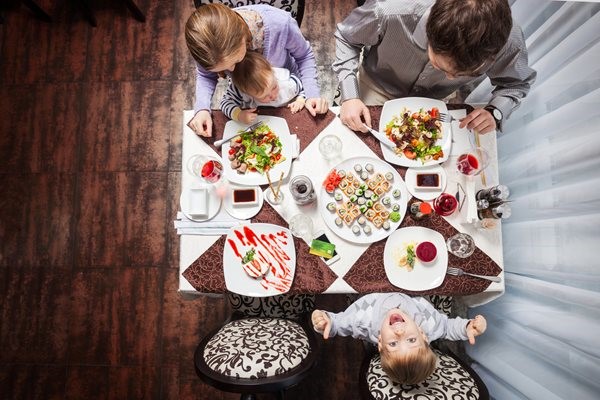There are many values and concepts in Judaism that emphasise the importance of respecting and learning from others. Adam yehidi nivra, for example, means, “every person is a unique creation." This means appreciating the wonderful things that make each person an individual and celebrating differences.

Another concept, lomed mikol adam, shows us how much each person has to offer. Because everyone has something they can teach us, we know that we can learn from each person's unique gifts.

Finally, we give kavod or respect, because it is the right thing to do. By teaching children to celebrate differences, we help them view the world through multiple perspectives.
Read
The books in the lists below feature diverse characters, multi-ethnic families, as well as characters learning to get along and respect each other despite differences. For more great book lists, visit the More section.
Reading Tips:
PJ Library Books:
Abe’s grandfather wants him to be a violinist; Willie’s father assumes he’ll grow up to be a baseball superstar. As it turns out, the boys are happiest when they exchange hobbies!
Everyone in Goldie Simcha’s apartment building knows it’s Friday night when they smell her delicious Shabbat cholent. But one Friday night, Goldie doesn’t feel well enough to cook. Her neighbors step up to make an unusual cholent for Shabbat -- andsoon Goldie will feel much better.
Sophie has two Grandmas from two different cultures, and they each make their own kind of chicken soup -- and each soup is delicious! The more Sophie learns about those soups, the more she realizes how similar they actually are -- on many levels.
A long-lasting friendship develops between Larnel, a young African-American, and Mrs. Katz, a lonely Jewish widow, when Larnel presents Mrs. Katz with a scrawny kitten.
As the only Jewish child in her class, a young girl not only learns that each person is unique but is able to share this understanding with her classmates.
Ruthie loves to knit -- and to help people. When her family gives shelter to a deaf woman and her baby, Ruthie realizes there’s a way for her to do both at once!
In Gold Rush times two friends, one an African American, the other Jewish, work together to earn the money to free the mother of one of the girls from a slave trader.
Watch
For Kids:
On Shalom Sesame, Sivan makes a new friend who introduces her to a wheelchair accessible park:
Some parents may recognise this classic Sesame Street song:
For Parents:
Do
Play with toys that represent diverse groups of people

One easy way to help your children accept and understand differences is to play with toys that represent various types of people. Here are three great sites to check out:
A Mighty Girl
Toy Like Me
Wonder Crew
Try new foods

Respecting and understanding diversity is also part of learning about kavod. Cooking and tasting foods from different cultures is a great way to organically introduce children to diversity. Pick a type of food that your family likes to eat together: soup, bread, or dips, for example, and look at the ways different cultures and countries make and eat that food.
Learn other languages
How to Say "Hello" in 21 Different Languages via Time
Embrace what makes you different or special
Like Elmo and "Miss Lupita" in the clip above, teach your child to celebrate what makes them unique and special.
Be honest and direct
While reinforcing the message that we're all the same on the inside is beautiful, it's also important to encourage children to recognize and accept differences. The site, Kiddie Matters points out: "so many adults tell children things like “we don’t see colour” and “we are all the same on the inside.” The truth is, people do come in different colours. It is more important that children learn to accept others for who they are instead of pretending that differences don’t exist."
Kids can be blunt which is both startling and fantastic at the same time. While it may be tempting to shush a child if they point out that someone is different from them, go ahead and make it a teaching moment. If a child accidentally says something offensive, gently correct them and explain that what they said can hurt someone's feelings.
More

Looking for more articles, tips, and book lists? Check out:
Parenting articles and resources:
Book lists:
Do you have any tips for teaching your children about respecting differences? Share your stories on Facebook or email us at info@pjlibrary.org.uk. Don't forget to add #pjlibrary to your post.
February 1, 2017